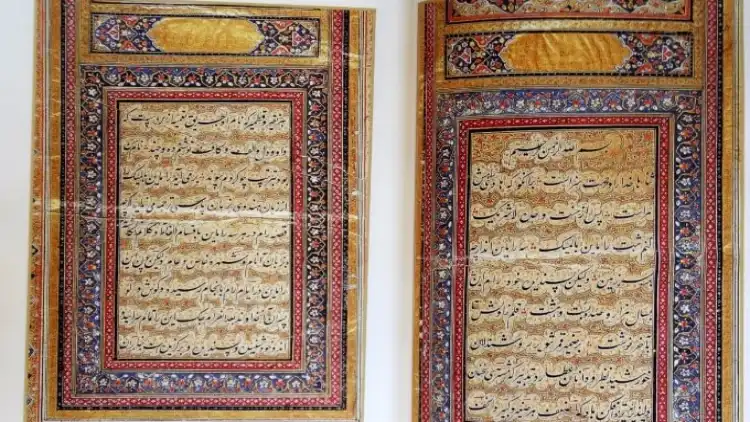
Ghaus Siwani, New Delhi
Though Ramayana is linked to Hindu religion yet the contribution of the Muslims in making this epic popular is immense. Mughal Emperor Jalaluddin Muhammad Akbar got many Sanskrit books translated into Persian and made those available to the educated people. Being in Sanskrit, these were read only by the Pandits, learned people or Brahmins.
Ramayana was originally written in Sanskrit by Rishi Ved Yyas. Till the rule of Akbar, it was not translated into any commonly spoken language. Much later, Tulsi Das wrote the first Ramayana in Oudhi language. This story had small variations from the original story. On the orders of Akbar, the well-known historian and scholar of that period Mullah Abdul Qadir Badauni translated it into Persian.
Badauni was engaged by the Court and paid handsomely. Special paintings were ordered to commemorate the occasion. Though Akbar who had a pro-active policy of embracing people of all religions, may have had a political motive in this move yet this translation proved to be useful to people for all times to come.
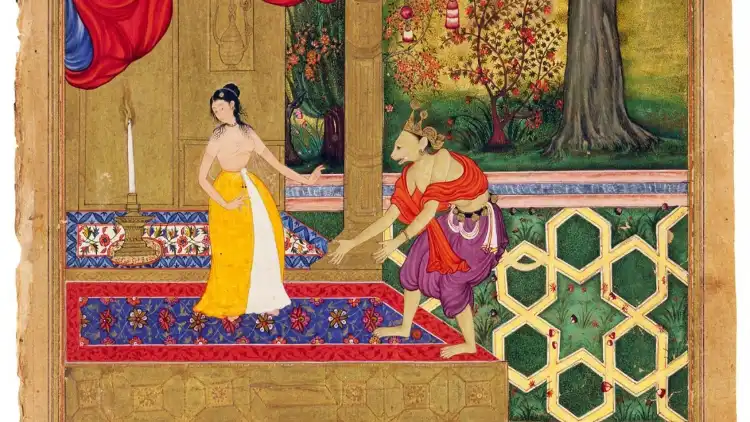
Painting of Sita and Hanuman in Ramayana Persian of Ahdakbari
The Ramayana was translated for the first time in history and this trend has continued. So far, the Ramayana has been translated into most of the world's languages.
Some ancient translations may not have survived the ravages of time and circumstance. Among those that have remained intact are four Persian Ramayanas and its copies are still found in some library.
In the Muslim era, the Kings and Nobles sought to preserve heritage and old cultural elements. The scholarly and cultural works of this period, and the scholarly and artistic writings, are on display in museums all over the world and adorn many libraries.
Rare specimens of Muslim era that seek to perpetuate the heritage can be found from the National Museum in Delhi to the British Museum in London and from the Khuda Bakhsh Oriental Library in Patna to the great libraries in the United States.
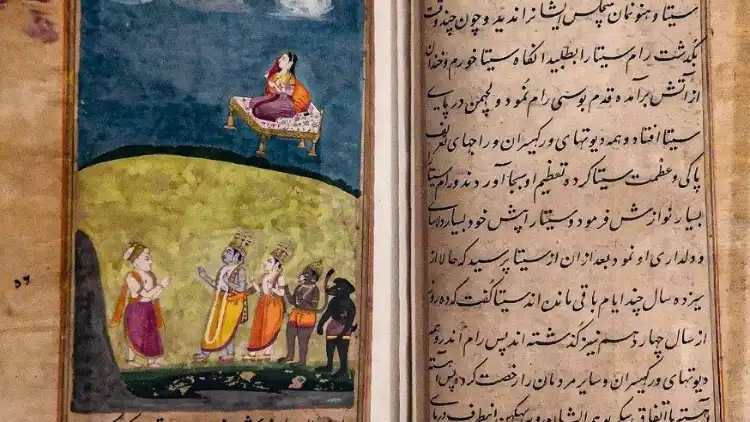
A version of the Persian Ramayana in the Nasta'liq script
In Akbar’s reign, Mullah Abdul Qadir Badauni’s translation of Ramayana was the most prominent work. He started this work in 5 AH (Islamic calender) and completed it in four years. Abul Fazl, the courtier of Akbar, has mentioned it that Badauni’s work was done at the behest of the Emperor.
Ramayana has since been translated in Hindi, Urdu, English and all Indian languages, but the most authentic translation of the original one in Sanskrit remains the Badauni’s in Persian. In all, there is evidence of 32 Persian translations of Ramayana in history.
Another ancient version of Ramayana written by Abdul Rahim Khan-e-Khana, a moughal courtier is preserved in the Rear Art Gallery, Washington. A microfilm has been made to preserve it.
Another translation of Ramayana in Akbar’s time is the Masih Ramayana. This was found in possession of Begum Hamida Bano, alias Maryam Makani, a bibliophile. She was in the “Zanankhana during the reign of Akbar and her exact relationship with the Royals is not known. It’s possible that she had ordered this particular Ramayana to be written.
Masihi Ramayan was later published by Munshi Naval Kishore Press, Lucknow.
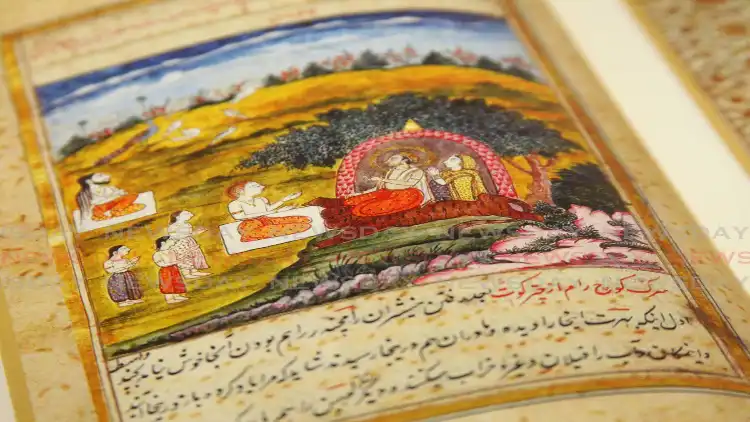
A sheet of Persian translation of Balmiki Ramayana
An important translation of Valmiki Ramayana into Persian was done by Sardar Mohar Singh who was in Raja Ranjit Singh's Army. It was published in 1890 by Ganesh Press Lahore.
Another translation was done by Gopal, son of a Govind. He started writing it in 1681 and completed in five years.
A translation by Chandraman Bedil was both in prose and poetry. This translation was completed in 1693.
After that, Khatal Das Bedil did a systematic translation called Nigaristan. It was published by Naval Kishore Press in 1875 but was attributed to Mirza Bedil on the basis of a misunderstanding.
In the year 1705, Amrsingh translated it under the name of Amar Prakash. During the reign of Mughal King Farrukh Sher, another Persian translation was done by Pandit Sameer Chand
Munshi Bankey Lal Zar’s translated work in Persian Khulasa-e Ramayan, an abridged version, was published in 1848.
Rai Munshi Parshwari Sahai Masroor and Lala Chandramal Chand translated the Ramayana by Tulsi Das, and it was published by the 1881 by Mufeed Aam Agra Press in the year 9 AD. Under the title Wajefa-e-faiz yani Rramayan Farsi.
Drli Das translated the Ramayana into a Persian poem in the 13th century in the form of Kaseema (eulogy) poety.
Darasikoh's Persian translation of Ramayana.
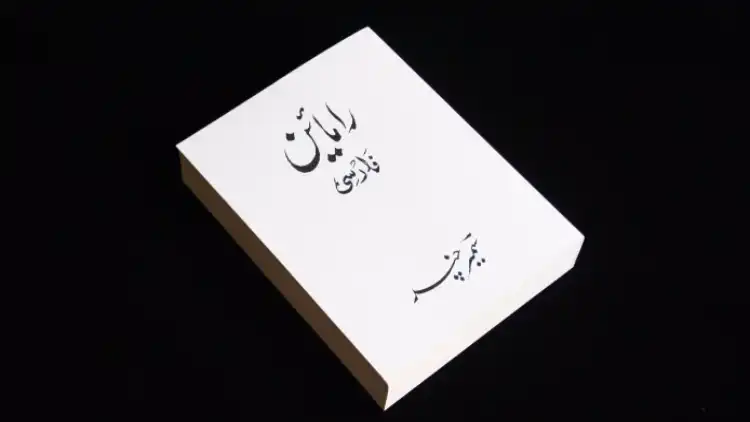
Masih Ramayana
A Persian version of the Ramayana, was done by Prince Darasikoh. He translated Tulsi Das's Ramayana into Persian. This book was first published in the year 1989 by Munshi Chirag Din, at Siraj Din Press, Rawalpindi. It was named Nazm Khushtar and is a poetic translation.
Suman Jamwal, Professor at Jammu University, says Dara Shikoh was well versed in Sanskrit and had translated several Sanskrit books into Persian. These included Upnishad and Ramayana.
A copy of his Persian translation of Ramayana Nazm Khushtar is also unique in the sense that it begins with Bismillah-ur-Rehman-ur-Rehman.
It is worth mentioning that prime Minister Narendra Modi has presented a copy of Nazm Khushtar to the Iranian President Rafsanjani and Spiritual leader Khomeini during his visit to Tehran
